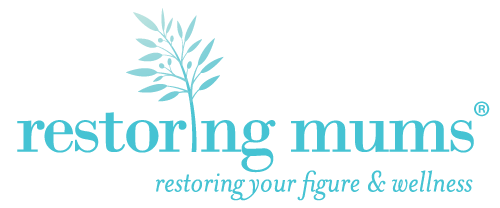How Do Japanese & French Women Keep Their Figures After Delivery? Part I
Japanese and French mothers enjoy one major benefit in common – low weight gain during pregnancy.
In Japan, the optimal weight gain is 8kg, regardless of the woman’s size or build. In fact, many believe that pregnant ladies could be scolded or even shamed for gaining too much weight, and later blamed for a difficult labour! On the flip side, Japanese mothers tend to recover their pre-pregnancy figures much faster than their Western counterparts.
In Japan, rice is a staple food source. The carbohydrates in rice satisfy your appetite, keeping you fuller for longer. Diet foods, on the other hand, have the opposite effect in that they make you hungry and you end up eating more.
I can attest to this personally. In one of my training trips to Brisbane, Australia, I was served a mixture of vegetarian and raw food for a week. I thought to myself, “That’s as good a diet as I could hope for,” and proceeded to enjoy the food on offer. However, four days into my trip I felt uncharacteristically bloated and pictures taken of me at that time show that I looked quite chubby! I then realised that, even though I was on a vegetarian diet, I ate much larger portions and consumed more meals than usual, as I was constantly hungry. Even though the diet was nut, dairy and gluten-free, and consisted mainly of fruit, vegetables and nuts, I still put on weight within just one week!
The second interesting point to note is that the Japanese serve food in a far more pleasurable size. The portions are small, but the variety of dishes delights and inspires the taste buds. So Japanese meals may be light, but afterwards you feel content and satisfied, while not uncomfortably full. It is interesting to note that Japan has one of the lowest obesity rates[1] among developed countries at just over 3%, compared to more than 35% for Americans.
In her book Japanese Woman Don’t Get Old Or Fat, Naomi Moriyama says, “You might think it’s all in our genes, but when Japanese people adopt a Western-style diet, they put on weight quickly.” So diet definitely plays an important role in the traditionally slim Japanese frame.
In Japan there is a preference for smaller babies, because this means an easier delivery. Vanity-wise, the less weight gained during pregnancy, the easier and faster it is for mothers to return to their pre-pregnancy figures. Interestingly, it is common practice for Japanese woman to wear postpartum corsets (or more passionately called postnatal girdle in South East Asia) and hip belts to help them achieve this as soon as possible. (To be continued…)
Karen Loke, Founder and Practitioner, Restoring Mums日本和法國的媽媽在懷孕後享受同一個主要的好處── 增加了很少的體重。
在日本,不管女性的產前體形大小,在妊娠期間最理想的體重增加為八公斤左右。事實上,在日本, 很多女性相信懷孕期若體重增加得太多是會被人責罵或羞辱的,以及其後會難產。在這無形社會壓力下,卻使日本媽媽往往比西方媽媽更快地回復懷孕前的身材。
在日本,米飯是主食源。米飯內的碳水化合物滿足妳的胃口,令妳的飽腹感更長。另一方面,減肥食品有相反的效果,令妳覺得肚餓和最終吃得更多。
我個人可以證明這一點。有一次我去澳洲布里斯班進行專業訓練,一個星期內, 中心只為研究生提供了新鮮的生食與素食的食物。我那時心想這可是千載難得的一個使自己吃得健康又可減減肥的良好契機! 我非常放心地繼續享受他們提供的食物。不過,四日後我變得一反常態地臃腫,那時的照片上的我看上去挺胖的!之後我意識到,即使我正在吃素,因為我總是覺得肚餓,所以我比平時吃更大的份量和更多餐。雖然飲食中主要包括水果、蔬菜和堅果、乳製品和無麩質的食物,但只要一個星期我仍然胖了。
值得我們注意的第二個有趣的地方是日本人的食物都是令人看了舒暢的份量。份量看來雖小,但各種菜餚滿足和激發味蕾。因此日本菜可能是輕型的,但之後會令妳覺得滿足和果腹,而又不會過滯或膩。有趣的是,在肥胖率[1]最低的發達國家中,日本是其中之一,只超過3%,而相對的美國卻有35%。
森山奈保美(Naomi Moriyama)在她的著作 《日本女人不會胖也不會老》(“Japanese Woman Don’t Get Old Or Fat”) 中說到:「您可能會覺得這一切是源於我們的基因,但當日本人採取了西式飲食習慣後,他們很快就會增重。」所以飲食在日本人傳統的苗條骨架上絕對扮演著重要的角色。
日本人偏愛較細小的寶寶,因為這代表著分娩會來得更容易。自負明智、在懷孕時増磅較少的話,媽媽會較容易和較快地回復懷孕前的身形。有趣的是,日本女性普遍會穿戴產後束腹帶(在東南亞更流行的叫法為產後腰封)和臀圍帶來幫助她們儘快產後修身(待續……)
Restoring Mums創辦人和治療師Karen Loke




